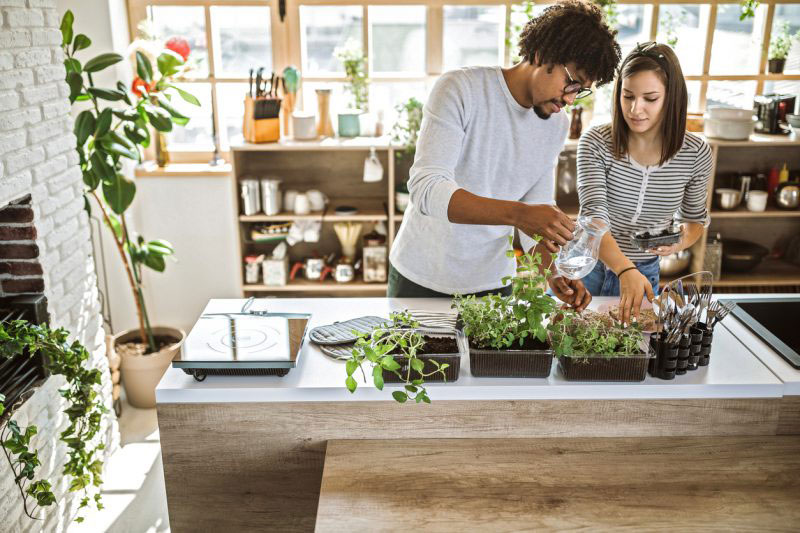The more “green” choices you fit into your everyday routine, the more you can contribute to environmental conservation. Try these easy, do-it-yourself, projects to help you go green at home.
Put Some Green in Your Routine with 10 DIY Projects
Switch to Energy-Efficient Light Bulbs
- It costs about $5 a year to run an incandescent bulb compared to about $1 for an LED and $1.20 for a CFL.1 Replace the five most-used bulbs in your home and enjoy the savings on your electric bill.
Give Your Water Heater Some Attention
- About 15 percent of the energy used in a home goes to heating water.2 Wrap your water heater in an insulating jacket to reduce heat loss. Set the thermostat to 110-120◦F. And, think about installing a Tankless Water Heater. Instead of heating a whole a storage tank of water so it’s ready when needed, heat water only at the time it’s needed. You’ll never run out of hot water from a properly-sized unit!
Insulate Hot Water Pipes
- Foam insulation sleeves are among the easiest type of product to install. This simple project can reduce heat loss, and deliver water that’s 2-4◦F warmer than water from un-insulated pipes. 3
Reduce Water Use
- Fix dripping faucets or a leaking toilet – they can waste more than 3,000 gallons per year.4 But the repair parts are low cost and typically easy for beginning DIYers to install. Turn off the water while you brush your teeth or shave. Install a water-saving shower head or toilet tank system. And, when you replace a fixture, look for the WaterSense label. It indicates the fixture is a water-efficient product that can help you go green at home.
Install a Ceiling Fan
- The added air circulation helps you cut down on furnace and air conditioner use.
Swap to a Few Natural Cleaners
- The next time you choose a household cleaner, try a product with low VOC or natural ingredients. Your choice could help reduce water pollution and indoor air pollution.
Choose Products with Low VOCs
- The air inside your home is often 2-5 times more polluted than outdoor air.5 Low VOC or zero VOC products like paint or household cleaners can help with your indoor air quality. Especially if you or your family have allergies or asthma.
Seal Off Drafts
- About one-third of a home’s heat loss occurs through windows and doors.6 Use caulking, weatherstripping and window film to seal those air leaks and you can see a big difference on your heating and cooling bills.
Hook Up a Rain Barrel
- Just one can save you about 1,300 gallons of water during the height of the summer.7 By connecting a rain barrel to your down spout, you can harvest the rainwater for your lawn, garden or landscape.
Start Composting
- Food production and food waste account for 13 percent of carbon emissions.8 Reduce your impact and create super-charged natural fertilizer for your garden in the process. Build a bin or buy one to collect and process compostable kitchen scraps, leaves and lawn clippings.
As always, you can find everything you need to go green at home at your local Central Coast Ace Hardware store.
Sources:
- Energy.gov: for 60W replacement bulb, based on 2 hours per day of use.
- http://www.energystar.gov/ia/new_homes/features/WaterHtrs_062906.pdf
- energy.gov/energysaver/projects/savings-project-insulate-hot-water-pipes-energy-savings
- www.epa.gov/watersense/our_water/why_water_efficiency.html
- www.epa.gov/iaq/voc.html
- www.nrdc.org/living/energy/energy-out-window.asp
- www.epa.gov/region03/p2/what-is-rainbarrel.pdf
- www2.epa.gov/food-recovery-week
Share on facebook
Share on twitter
Share on linkedin




